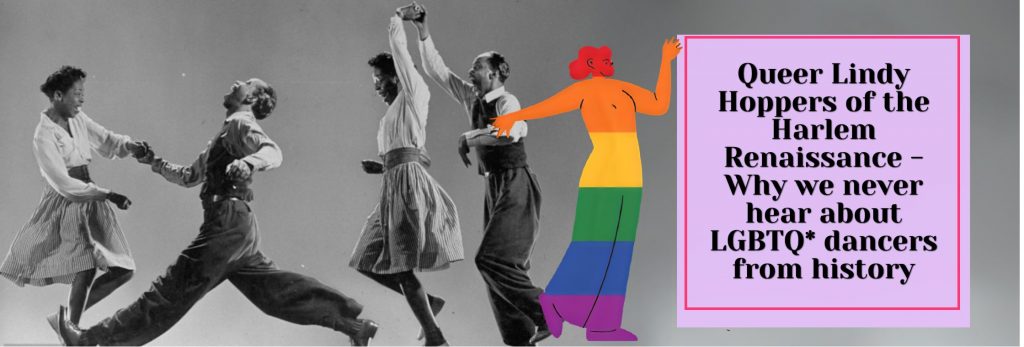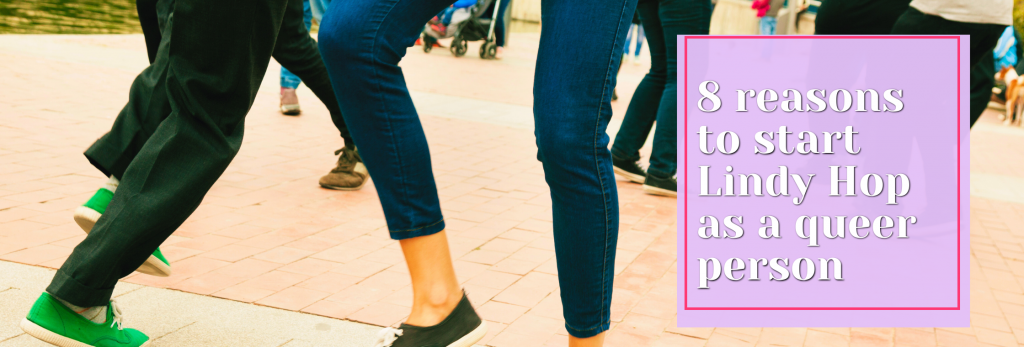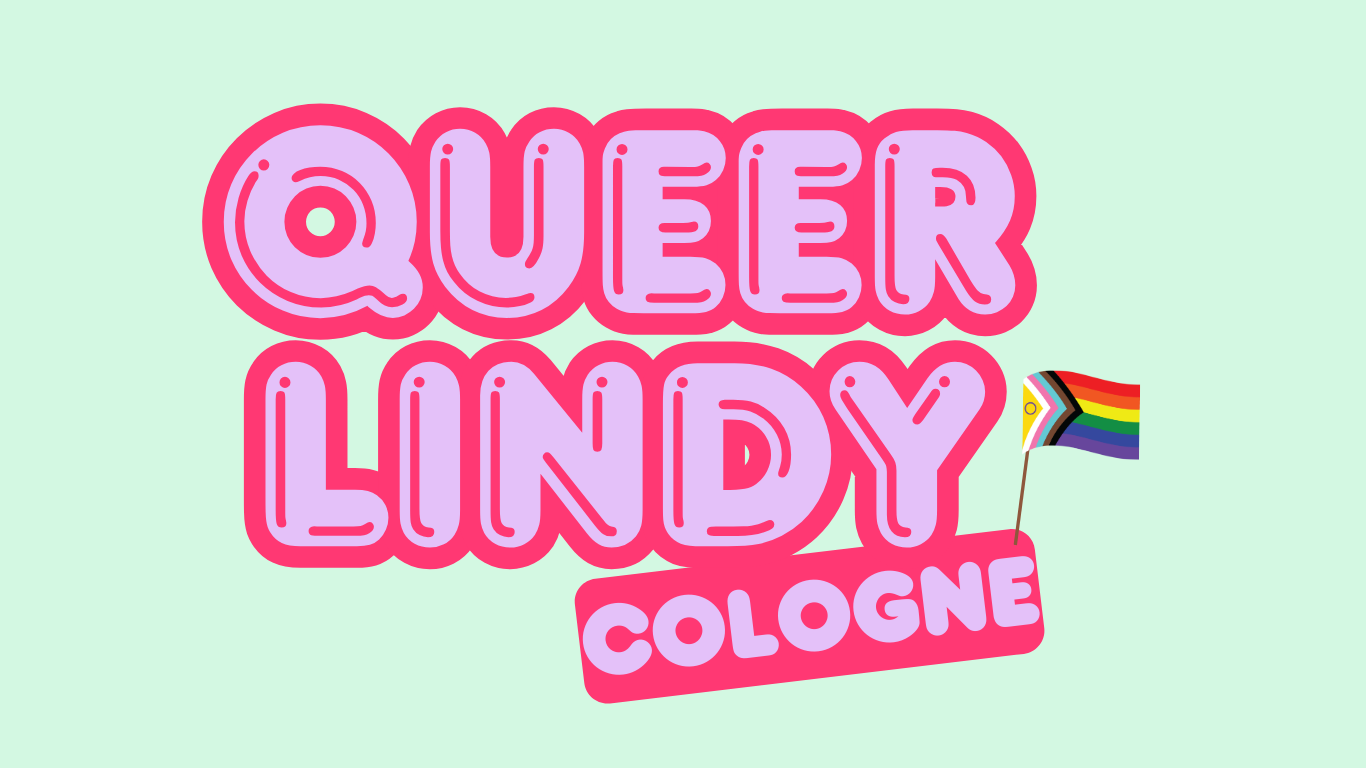Queer Lindy Hoppers of the Harlem Renaissance

Despite societal pressures and legal restrictions, a vibrant and visible queer world thrived in Harlem during the 1920s and 1930s, significantly influencing and participating in the era’s culture.[mfn]cf Riemer&Brown, p. 56; for an accessible introductions to Queer Harlem Renaissance, check out Johnson’s Flamboyants. The Queer Harlem Renaissance I Wish I’d Known[/mfn] While we regularly mention icons like Frankie Manning and Norma Miller, we never highlight any LGBTQ+ dancers.[mfn]Some authors mention that dancers like Leon James and Al Minns were rumored to have been queer (Fürnkranz, p. 43); however, there does not seem to be a lot of evidence for this.[/mfn] Even though we may never find a famous queer Lindy Hopper from the old days, the evidence shows that queer people were actively participating in and shaping a social dance scene, especially in private and semi-public spaces.
8 reasons to start Lindy Hop as a queer person

No matter what part of the alphabet mafia you identify as – lesbian, gay, bisexual, trans, non-binary, genderqueer, or any other wonderful identity within our community – Lindy Hop might just be right for you.
We here at Queer Lindy Cologne want to help you become a part of our dance scene. We do realise, though, that a lot of you might have no idea what (queer) Lindy Hop is, or you might have just ended up here by googling “good dance for queer people” – you have not (yet) been infected with the Swing virus. No worries, we’re here to make sure you soon will be! If you are queer and would like to start dancing, Lindy Hop could be just what you are looking for.
Check out the 8 reasons why we think you should start Lindy Hop as a queer person.
